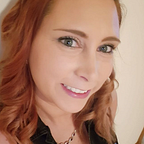What I Have Learned About Picture Book Publishing In Australia
Firstly, It’s tough! I have not yet had that magic phone call to say that one of my picture book manuscripts have been accepted for publication by a traditional publishing company. However, like many writers, I write because I love it and therefore will continue to write regardless of publishing success (or lack thereof).
Of course there is the option of self-publishing, which no longer comes with the kind of stigma that self-publishing has had in the past. There are many successful authors who began their journey by self publishing and have had extremely successful writing careers. The landscape has changed in recent times, particularly with the introduction of Kindle Direct Publishing (KDP) where authors can upload their work direct to kindle. This is something I have been seriously considering and have posted the link below for those who are interested in exploring this option further.
Publishing companies receive thousands of manuscript submissions ever year and to avoid the slush pile, its vital that your submission follows the guidelines set out by each publishing company. Also, your cover letter and supporting information must be carefully written and edited. If a cover letter contains errors, your manuscript may be tossed aside without even getting a look over.
Many years ago, an author recommended a book to me to help with writing my first book proposal. It is called A Decent Proposal by Rhonda Whitton and Sheila Hollingworth and I found this book hugely helpful as it stepped out the process for creating a quality book proposal. You can find this book here:
There is also a range of information on the internet about writing book proposals, but be mindful that many publishers now have online submission forms where limited information can be added, others ask for a full proposal to be posted and some accept emailed submissions. Reading the guidelines on each publishing company website before submitting is really important, and unfortunately it’s not really possible to create one proposal and send it out all over the place as each submission will need to be individualized to each publishing company. Here is a great list I stumbled across which lists the publishing companies in Australia who are accepting unsolicited submissions for children’s fiction and picture books.
The layout of your manuscript is also very important. I found this fantastic example of a manuscript submission for a picture book from Emma Quay, author of Rudie Nudie. For most picture book publishers, it is important that the story sticks to a maximum of 32 pages (including the title page etc) this is because this is the format required for the printing machines. Check out this picture book manuscript example below.
When i say to a parent “read to a child”, I don’t want it to sound like medicine. I want it to sound like chocolate— Mem Fox
One of my all time favourite authors, Mem Fox also has a great list of Do’s and Don’ts on her website which are helpful and thought provoking. When I read things like this, however, I am mindful of keeping an open mind and realizing that this is one persons perspective. For example, Mem talks about not writing in rhyme. I LOVE writing in rhyme and this is a particular strength of mine so obviously I won’t be taking that advice. I think the most important thing really is that the rhyme is written well, has a great rhythm to it and you target publishers who are interested in these kinds of books.
I hope these resources are as helpful to you as they have been to me and I wish you all the very best with your writing and publishing journey.
